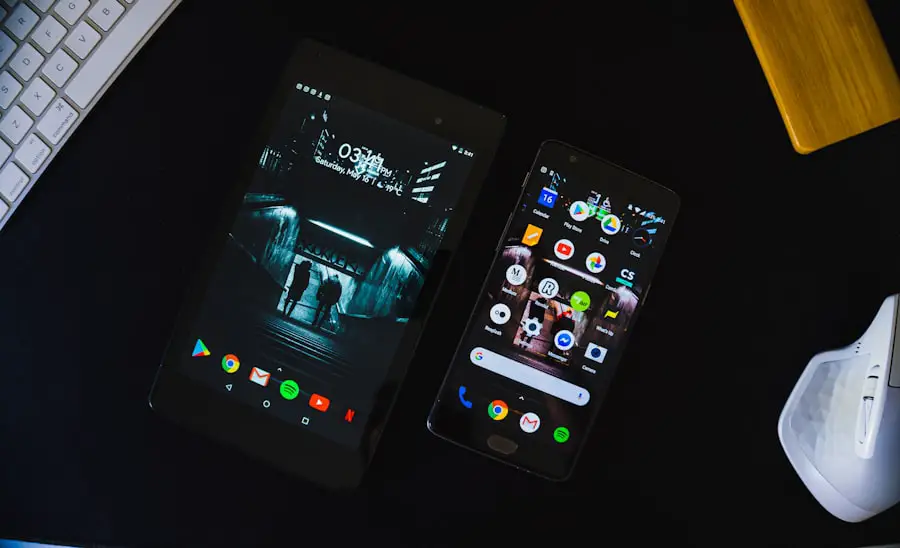In the realm of mobile technology, the rivalry between iPhone and Android devices has been a defining characteristic of the smartphone landscape. Both platforms have their unique ecosystems, user interfaces, and functionalities, which can sometimes create barriers for users who wish to interact seamlessly across devices. One area where this compatibility is particularly relevant is location tracking.
As smartphones have become integral to our daily lives, the ability to share and track locations has gained prominence, whether for personal safety, navigation, or social connectivity. Understanding how these two operating systems can work together in terms of location tracking is essential for users who own devices from both camps. The iPhone, powered by Apple’s iOS, and Android devices, which run on Google’s operating system, have distinct approaches to location services.
Apple’s ecosystem is known for its tight integration of hardware and software, providing a seamless user experience. In contrast, Android’s open-source nature allows for a wider variety of devices and customization options. This divergence can lead to confusion regarding compatibility, especially when it comes to sharing location data.
As we delve deeper into the technologies that enable location tracking and the methods available for cross-platform interaction, it becomes clear that while challenges exist, solutions are also readily available.
Key Takeaways
- iPhone and Android devices can be compatible in terms of location tracking technology.
- Location tracking technology allows devices to pinpoint their geographical location using GPS, Wi-Fi, and cellular data.
- An iPhone can track an Android device using built-in features like Find My iPhone and Google Maps.
- To enable location tracking on an iPhone, go to Settings, Privacy, Location Services, and toggle the switch to on.
- To enable location tracking on an Android device, go to Settings, Location, and turn on the toggle switch.
Understanding Location Tracking Technology
Location tracking technology has evolved significantly over the years, leveraging various systems and methodologies to pinpoint a device’s geographical position. At its core, location tracking relies on Global Positioning System (GPS) satellites, which transmit signals to devices equipped with GPS receivers. These signals allow devices to calculate their precise location based on the time it takes for signals to travel from satellites to the receiver.
However, GPS is not the only method employed; Wi-Fi positioning, cellular triangulation, and Bluetooth beacons also play crucial roles in enhancing accuracy and reliability. Wi-Fi positioning utilizes nearby Wi-Fi networks to determine a device’s location by measuring signal strength and identifying known network locations. This method is particularly useful in urban environments where GPS signals may be obstructed by tall buildings or other structures.
Cellular triangulation involves using multiple cell towers to estimate a device’s position based on signal strength and timing. Bluetooth beacons, on the other hand, are small devices that transmit signals to nearby smartphones, allowing for precise indoor location tracking. Together, these technologies create a robust framework for location tracking that can adapt to various environments and user needs.
Can an iPhone Track an Android Device?

The question of whether an iPhone can track an Android device is nuanced and depends on several factors, including the applications used and the permissions granted by both parties. In general, iPhones cannot natively track Android devices through built-in features like Apple’s Find My app. This limitation arises from the differing ecosystems and privacy policies of Apple and Google.
However, there are third-party applications designed to bridge this gap, allowing users on both platforms to share their locations with one another. For instance, apps like Google Maps and Life360 enable cross-platform location sharing. Users can create groups within these applications where both iPhone and Android users can share their real-time locations with each other.
This functionality is particularly useful for families or groups of friends who wish to stay connected while navigating through busy urban areas or during travel. While native tracking capabilities may be limited between the two platforms, the availability of third-party solutions provides a viable alternative for users seeking cross-device compatibility.
How to Enable Location Tracking on an iPhone
| Step | Description |
|---|---|
| 1 | Open the Settings app on your iPhone |
| 2 | Scroll down and tap on Privacy |
| 3 | Tap on Location Services |
| 4 | Toggle the switch to enable Location Services |
| 5 | Scroll down to find the app you want to enable location tracking for |
| 6 | Tap on the app and select “While Using the App” or “Always” for location access |
Enabling location tracking on an iPhone is a straightforward process that involves adjusting settings within the device’s operating system. To begin, users must navigate to the “Settings” app and select “Privacy.” Within this menu, there is an option labeled “Location Services,” which must be turned on to allow apps to access location data. Once enabled, users can customize which applications have permission to use their location by selecting “While Using the App,” “Always,” or “Never.” This granularity ensures that users maintain control over their privacy while still benefiting from location-based services.
Additionally, Apple offers a feature called “Find My,” which combines location tracking with device security. By enabling Find My iPhone within the settings, users can track their device’s location if it is lost or stolen. This feature also allows users to share their location with friends and family members who have Apple devices.
To share their location through Find My, users can select “Share My Location” within the app and choose specific contacts with whom they wish to share their whereabouts. This integration of location tracking with security features exemplifies Apple’s commitment to user safety while providing practical functionality.
How to Enable Location Tracking on an Android Device
For Android users, enabling location tracking involves a similar process but may vary slightly depending on the device manufacturer and version of the operating system. Generally, users begin by accessing the “Settings” app and locating the “Location” option. Here, they can toggle the location services on or off.
Once activated, users can further refine their settings by choosing between different modes such as “High Accuracy,” “Battery Saving,” or “Device Only.” The High Accuracy mode utilizes GPS, Wi-Fi networks, and mobile networks for precise location tracking. Moreover, Android devices come equipped with Google Maps, which offers robust location-sharing capabilities. Users can open Google Maps, tap on their profile picture or initial in the top right corner, and select “Location Sharing.” From there, they can choose how long they want to share their location and with whom—whether it’s a specific contact or anyone with a link.
This feature not only facilitates real-time tracking but also enhances safety during travel or outdoor activities by allowing friends or family members to monitor each other’s locations.
Sharing Location Data Between iPhone and Android

Google Maps: A Cross-Platform Solution
One of the most straightforward ways is through Google Maps, which is available on both platforms. Users can initiate location sharing by selecting a contact from their address book or generating a shareable link that can be sent via text message or email.
Messaging Apps: WhatsApp and Facebook Messenger
Another popular option for sharing location data is through messaging applications like WhatsApp or Facebook Messenger. Both platforms support location sharing features that enable users to send their current whereabouts in real-time or as a static pin on a map.
Effective Communication without Platform Limitations
This capability is particularly useful in social settings where groups may be trying to coordinate meetups or navigate unfamiliar areas together. By utilizing these applications, iPhone and Android users can effectively communicate their locations without being hindered by platform limitations.
Using Third-Party Apps for Cross-Platform Tracking
In addition to native solutions provided by Apple and Google, numerous third-party applications cater specifically to cross-platform tracking needs. Life360 is one such app that has gained popularity for its family-oriented features. It allows users from both iPhone and Android devices to create private groups where they can share real-time locations with one another.
The app also includes additional functionalities such as driving reports, emergency alerts, and location history, making it a comprehensive tool for families concerned about safety. Another noteworthy application is Glympse, which enables users to share their locations temporarily with friends or family members without requiring them to download the app themselves. Users simply send a Glympse link via text or email that recipients can open in any web browser to view the sender’s real-time location on a map.
This flexibility makes Glympse an attractive option for those who want quick and easy location sharing without committing to a specific platform.
Privacy Concerns and Data Security
As with any technology that involves sharing personal information, privacy concerns surrounding location tracking are paramount. Users must be aware of how their data is being used and who has access to it when enabling location services on their devices. Both Apple and Google have implemented privacy measures designed to protect user data; however, vulnerabilities still exist.
For instance, if a user shares their location with an app that does not have robust security protocols in place, there is a risk that this information could be misused or exposed. Moreover, users should consider the implications of sharing their locations with friends or family members through third-party applications. While these apps often provide valuable features for safety and connectivity, they may also collect data beyond just location information—such as usage patterns or personal preferences—which could be sold to advertisers or other third parties without explicit consent.
Therefore, it is crucial for users to read privacy policies carefully and adjust sharing settings according to their comfort levels.
Limitations of Cross-Platform Tracking
Despite advancements in technology that facilitate cross-platform tracking between iPhones and Android devices, several limitations persist that users should be aware of. One significant challenge is the dependency on internet connectivity; both devices must have access to mobile data or Wi-Fi for real-time tracking features to function effectively. In areas with poor connectivity or during network outages, users may find themselves unable to share or receive location updates.
Additionally, discrepancies in how each platform handles permissions can lead to confusion among users attempting to share locations across devices. For example, an iPhone user may find it challenging to grant permission for an Android user’s app due to differing privacy settings or app capabilities between the two operating systems. Furthermore, not all third-party applications offer equal functionality across platforms; some features available on one device may not be present on another due to design choices made by developers.
Tips for Efficient Cross-Platform Tracking
To maximize the effectiveness of cross-platform tracking between iPhones and Android devices, users should consider several best practices that enhance usability while maintaining security. First and foremost, ensuring that both parties have agreed upon which applications will be used for sharing locations is essential; this prevents confusion and ensures everyone is on the same page regarding permissions and functionalities. Regularly updating apps is another critical step; developers frequently release updates that improve performance and security features.
Users should also familiarize themselves with privacy settings within each application they use for tracking purposes—this includes understanding what data is being shared and with whom it is accessible. Additionally, setting clear boundaries around when and how often locations are shared can help maintain trust among friends or family members involved in cross-platform tracking arrangements.
The Future of Cross-Platform Tracking
As technology continues to evolve at a rapid pace, the future of cross-platform tracking between iPhones and Android devices looks promising yet complex. Innovations in artificial intelligence and machine learning may lead to more sophisticated tracking solutions that enhance accuracy while prioritizing user privacy. Furthermore, as more people adopt smart home technologies and wearable devices equipped with GPS capabilities, the potential for integrated tracking systems will expand significantly.
However, as we move forward into this interconnected future, it remains crucial for users to stay informed about privacy implications associated with sharing their locations across different platforms. Balancing convenience with security will be key in navigating this landscape effectively. Ultimately, as developers strive to create more seamless experiences across operating systems while addressing privacy concerns head-on, users can look forward to increasingly sophisticated tools that enhance connectivity without compromising personal safety.
FAQs
Can an iPhone track an Android phone?
No, an iPhone cannot directly track an Android phone. The two operating systems, iOS and Android, are not compatible for direct tracking between devices.
Are there any apps or methods to track an Android phone from an iPhone?
Yes, there are third-party apps and services available that allow iPhone users to track an Android phone. These apps typically require installation on the Android device and may require both devices to have internet access.
What are some popular apps for tracking an Android phone from an iPhone?
Some popular apps for tracking an Android phone from an iPhone include Find My Friends, Family Locator, and Life360. These apps allow users to track the location of the Android phone and may offer additional features such as geofencing and location history.
Is it legal to track someone else’s Android phone from an iPhone?
The legality of tracking someone else’s Android phone from an iPhone depends on the laws and regulations of the specific jurisdiction. In many cases, tracking someone else’s phone without their consent may be considered a violation of privacy laws. It is important to obtain proper consent before tracking someone else’s phone.
What are some alternative methods for tracking an Android phone from an iPhone?
In addition to using third-party apps, some alternative methods for tracking an Android phone from an iPhone include using built-in features such as Google’s Find My Device or enlisting the help of the mobile service provider to track the device’s location.











1 thought on “Can an iPhone track an Android?”